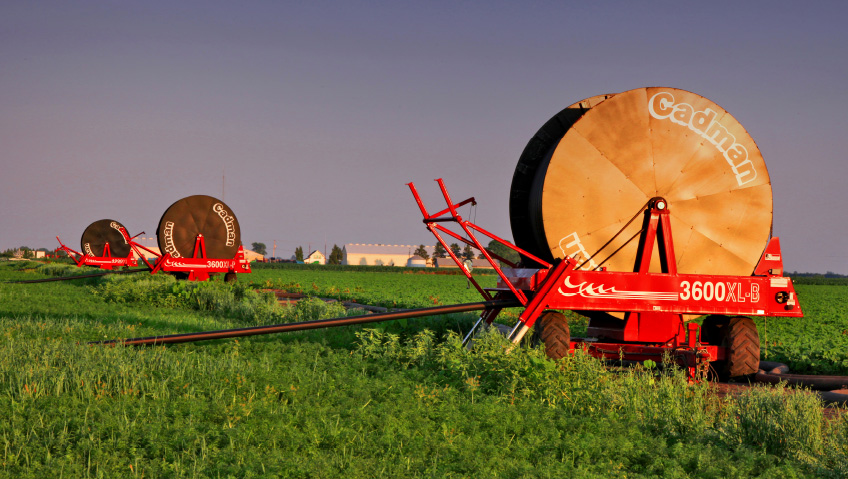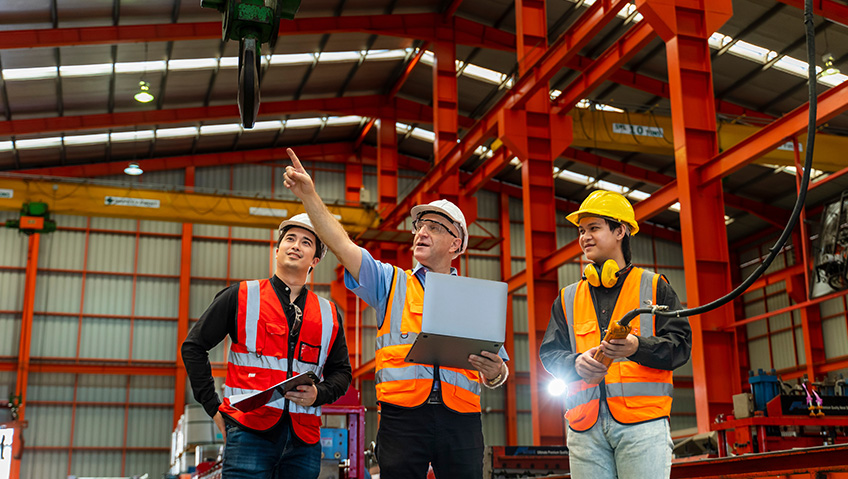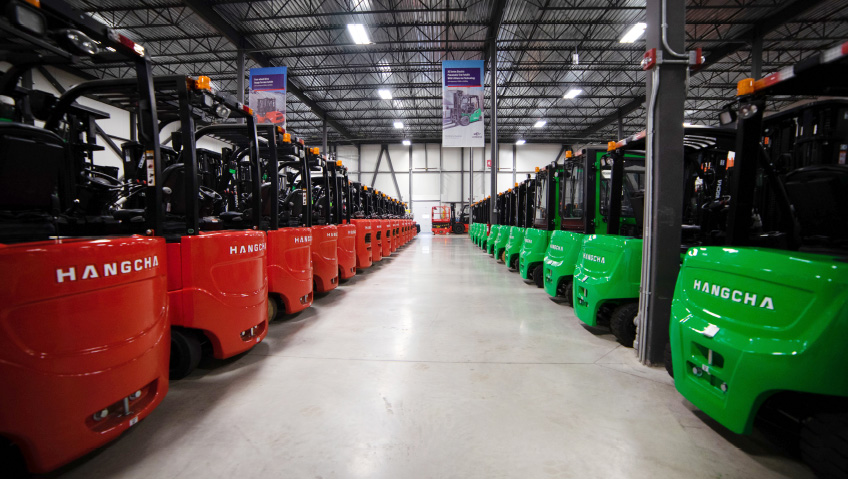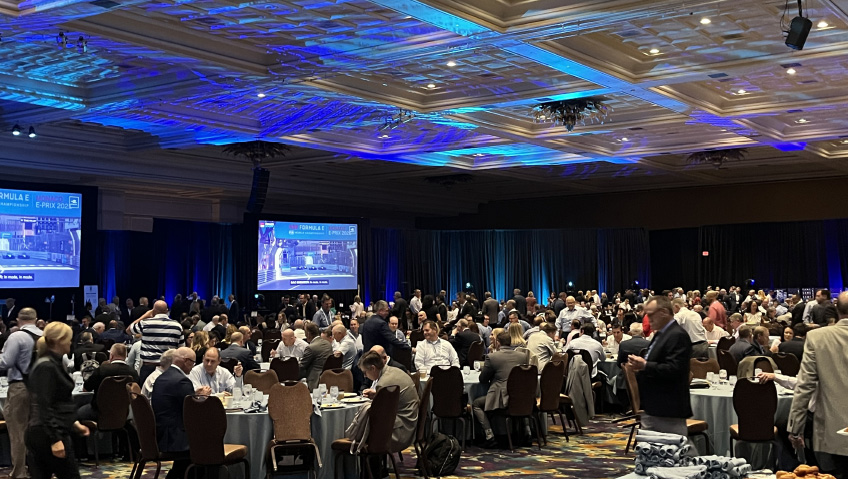Every business seeks to generate revenue and turn a profit. But there’s something special that happens when a business does that by helping people who are facing real adversity.
Cadman Power Equipment is one of those businesses. Today, Cadman is a global company, with distribution facilities overseas and more than 25 percent of its sales outside North America. But it is a company with a rich history. That history begins with helping people deal with serious challenges, and that is a goal that continues to this day.
Craig Cadman is the President and CEO of this third-generation family enterprise based in Courtland, Ontario. The company was founded 71 years ago by Craig’s grandfather.
“My grandfather was working for my great grandfather, who had a jewelry manufacturing business,” he explains. “My grandfather wanted to do something other than making rings and tie tacks.”
Craig’s grandfather saw his entrepreneurial future taking him in a very different direction: farm equipment. He started Cadman Power Equipment in 1952, selling lawn mowers, rototillers, and similar machines. Just one year later, Ontario farmers would face a challenging growing season.
“There was a really hard drought in 1953,” Craig shares. “My grandfather got into the irrigation business, selling pipes and sprinklers and pumps, and that was when the company started to flourish.”
Several years after the drought, things changed once again. “It rained in 1956—a lot. Irrigation wasn’t so hot,” Craig says. “So my grandfather took on the Ford tractor line, while maintaining irrigation as the main work we did.”
The business then began passing to the hands of the next generations of Cadmans. “My grandfather sold Cadman Power Equipment to my dad in 1969. At 21 years old, he became the owner and president of the company, and the youngest Dealer Principal for Ford tractors.” The company continued to sell tractors until the financial crisis of the 1980s. When interest rates skyrocketed, Cadman’s tractor business suffered, borrowing rates for that equipment being out of reach as they were for most farmers.
As a young man growing up in a successful family business in farm country, Craig’s childhood was inextricably linked with the business.
“I went full-time with the company in 1997, but I’ve been here since I can remember,” he says. “Some days my mom would come looking for me, when I wasn’t waiting for the school bus. I was hiding in my dad’s car, because I wanted to go to work, not school!”
He continued to work in the business part-time through the school year and full-time in the summers. “I’ve worked in every area of the company. It was my dad’s idea—he knew that if I worked in every department, I’d know what I was doing when I started running the business.”
A key advantage of family businesses is their ability to pivot and make decisions quickly, and Cadman Power Equipment has continuously shifted to meet its customers’ needs, adapting its product lines in response. Irrigation, however, has always remained its primary focus. In the 1980s, Cadman doubled down and began manufacturing its own line of irrigation equipment, producing its first three machines in 1982 and 12 more the following year.
By 1992, Cadman was the largest manufacturer of hard hose reel irrigation systems in North America, and was expanding its manufacturing and distribution facilities while also looking further afield for new business.
“In the late 1980s, we decided to spread our wings geographically, and started selling into the United States,” says Craig. “We started with nearby states, but by 1993, we had sales people pushing as far as California.”
Adapting its product lines again, this time to include manure management, was an easy decision. “We had always been partially in manure management, selling pumps and fittings. We saw an opportunity to move away from the guns; nobody wanted the spray in the air. We developed the hard hose drag machine and the top spread boom, and added some bigger pumps to do that kind of work.”
The Great Recession of the late 2000s brought more hardship for the industry, and a new opportunity for Cadman. Record-high oil prices drove a corresponding expansion in fracking exploration.
“We didn’t target the fracking industry, but there was a need to get water to frack sites,” Craig explains. “It’s the same thing we’ve always been doing, just bigger. Instead of selling a 150 horsepower engine to a farmer, we’re selling a 600 horsepower machine. Instead of a six-inch hose, we’re selling a 10- or 12-inch hose.”
As the approach to environmental sustainability has changed, Cadman’s products have also evolved. Today, its agricultural irrigation equipment helps conserve water by making sure more of it gets to the soil and plants that need it. “We started manufacturing low-pressure irrigation booms for farmers,” Craig says. “Typical irrigation reels are like a giant sprinkler; they’re about 70 to 74 percent efficient. Our irrigation booms are 90 to 93 percent efficient—as efficient as drip irrigation, with the benefit of washing and cooling the crops.”
This kind of innovation can only happen when a business is committed to listening to what its customers need and want.
“We’re really good at listening to our customers,” Craig says. “Someone might come in here, thinking they need the largest irrigation equipment we build. We talk it out to figure out what he or she really needs. That way, they don’t spend more money than they need to or conversely, buy a piece of equipment that’s too small for their situation.”
To build this level of credibility, a company needs great people, and Cadman’s team is a strong one. “I’m proud to say that the vast majority of our team has been with us over 10 years,” Craig shares. “A good number of them have been with us over 15, even 20 years. Our core group is dedicated, they’re loyal.”
That loyalty has been reciprocated through some challenging times. In the onset of the COVID pandemic, Craig was anxious about the impact that a shutdown could have on the business and on the members of his team and their families. The announcement that agriculture would be considered essential meant the business could remain in operation, keeping its people working.
And Cadman’s commitment to its people extends to its customers, too. “This company has always stood by one thing: no matter what, no matter when, we’ll get you fixed up. There’s nothing worse than downtime when it comes to irrigation, because of the stress to the crop.”
That kind of customer commitment runs deep in the family business. Craig recalls many instances as a child when customers would call at odd hours in need of parts or service. His father would jump in to help however he could. Today, his service team does the same, even as shifting weather patterns in recent years have made it more challenging for Cadman and its customers alike.
“As the weather pattern shifts, it’s really hard for us to know where to put our focus, geographically,” Craig explains. “The unpredictability is harder for the farmers, too.”
Nonetheless, he has remained steadfast in his vision for the future of the business and its ability to help customers facing unique challenges. Cadman excels at helping its customers overcome adversity with innovation, and its equipment is now being used to battle forest fires in a remarkable new way. Typically, water bombers draw water from lakes and drop it on the fire zone itself. This is very expensive. “It can cost upwards of $120,000 per dip, operating one of those big tanker planes,” and the traditional approach comes with other problems as well. It puts human lives at greater risk, and it’s not as efficient. Cadman’s equipment, in contrast, is not only less costly, but it keeps people and property safer, too.
“Using our equipment, they create a giant wall of water,” Craig explains. “For all intents and purposes, they’re changing the atmosphere around the fire. Because the fire draws in oxygen, it draws in the cooler, damp air. That allows the fire fighters to move in more safely, plus there’s a barrier between the fire and wherever it’s headed.” Cadman’s success with this equipment in Alberta has led to interest in California, where, tragically, the need is so acute.
In Craig’s eyes, the future of the business is bright. The team isn’t resting on its laurels; instead, it is building on its success and innovating even further. One challenge is finding the right balance when it comes to technology. Like most other products, Cadman’s equipment has become far more technologically advanced, offering the ability to control an incredible range of functions from smartphones.
“We want to offer technology that’s sustainable, and that takes balance: giving our customers the tools they need without overcomplicating things.”
Like the two generations before him, Craig is up to the challenge. He’ll do it like Cadman Power Equipment always has: listening to its customers, understanding their problems and how to solve them, and providing second-to-none support for the products it provides.






